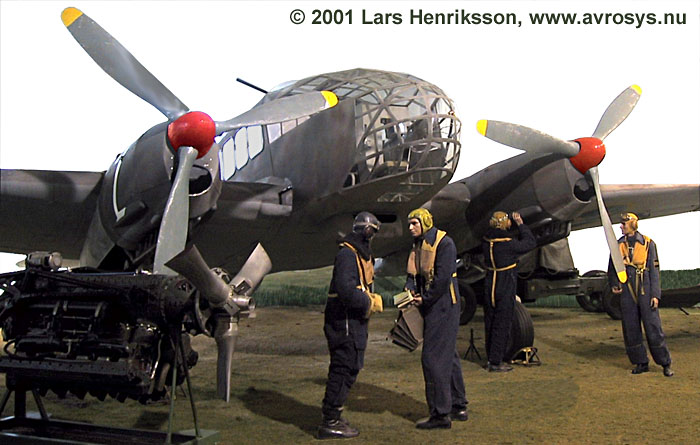|
|
||
|
S
16 - Caproni Ca 313 (1940-1945) |
||
| Page 1 (2) | ||
|
|
||
 |
||
|
In
1936, Cesare Pallavicino, an engineer at Caproni of Italy, designed two
prototypes of two-engine aircraft intended to be used at the Italian
colonies in Africa. They were named Ca 309 Chibli (Desert Wind) and Ca
310 Libeccio (South-west Wind). The Ca 309 was ordered by Regia
Aeronautica of Italy and used in northern Africa mostly as a combined
reconnaissance- and bomb aircraft or as a six-seated transport. The more
powerful Ca 310 was exported to several other countries. Further
developments were designated Ca 311 - Ca 314. Around 1.000 aircraft of
the variants Ca 309 - 314 were manufactured. At
the end of 1939, the supply of any aircraft to the Swedish Air Force
from manufacturers abroad became impossible. The capacity of the
domestic Swedish aircraft industry was small. One exception was the
still neutral Italy. When the possibility to purchase Italian aircraft
arose, Sweden had to take the opportunity. The aircraft, the fighters J
11 and J 20 and the Caproni
Ca 313, were not what the Air Force really wanted, and the business
use to be mentioned as ”the
Emergency Purchase”. As compensation, Sweden had to export
strategic raw materials to the Italian war industry. 84
Caproni Ca 313 were delivered to the Air Force. Of these were 30
intended as bombers (B 16A)
and 14 was of the torpedo bomber variant (T
16A). The first B 16As arrived to Wing F 7 in October 1940. The
Capronis were stricken with a lot of problems and were grounded for long
periods. Bad engine installations led to fires. Wings broke apart during
flight due to bad materials and workmanship. In December of 1941, the
remaining Capronis were rebuilt as long-range (”strategic”)
reconnaissance aircraft and based at the reconnaissance Wing F 11 at Nyköping.
They earlier bombers got the new designation S
16A and the torpedo aircraft became S
16B. The
S 16 was armed with two fixed wing-mounted 13 mm automatic cannons and
two moveable 8 mm machine-guns. One machine-gun was mounted in a dorsal
turret. The other was fitted at the underside of the fuselage, firing
downward-backward. The S 16 was fitted with additional fuel tanks and of
course with cameras.
The crew of four consisted of pilot, radio operator/co-pilot,
observer and mechanic/gunner.
The
aircraft was powered by two 750 hp Isotta-Fraschini Delta RC 35 engines
of inverted V-type. All
surviving Capronis were used as targets for gunnery practices and fire
exercises. A replica of the S 16 was built for the TV-series ”Tre kärlekar”
(Three Loves”), directed by Lars Molin. Afterwards, the aircraft
was donated to Flygvapenmuseum (photo). Span 16,65 m. Length 11,80 m. MTOW 5.900 kg. Maximum speed 420 km/h. |
||
|
|
|
|
|
||
| Updated 2011-09-20 | ||